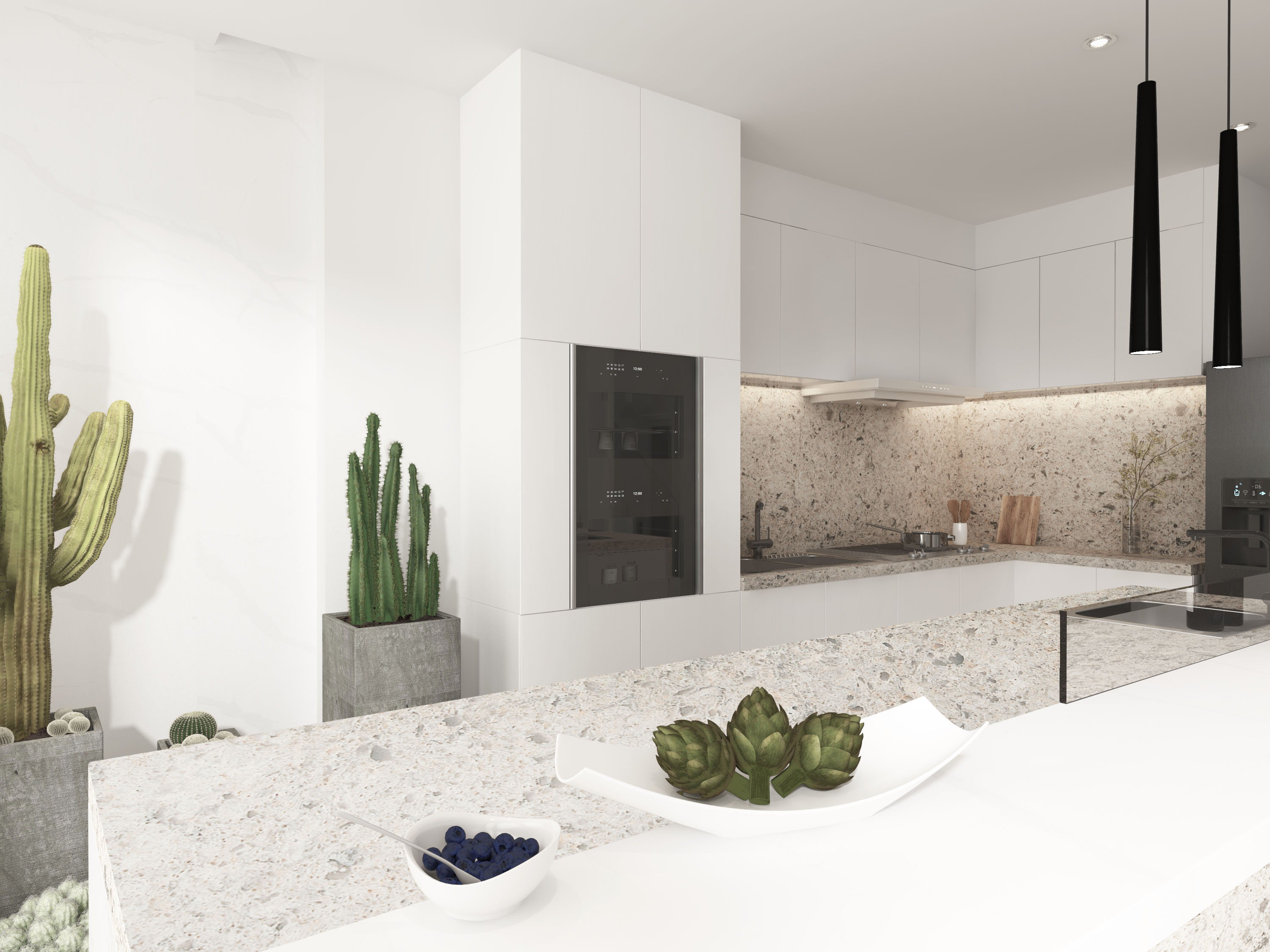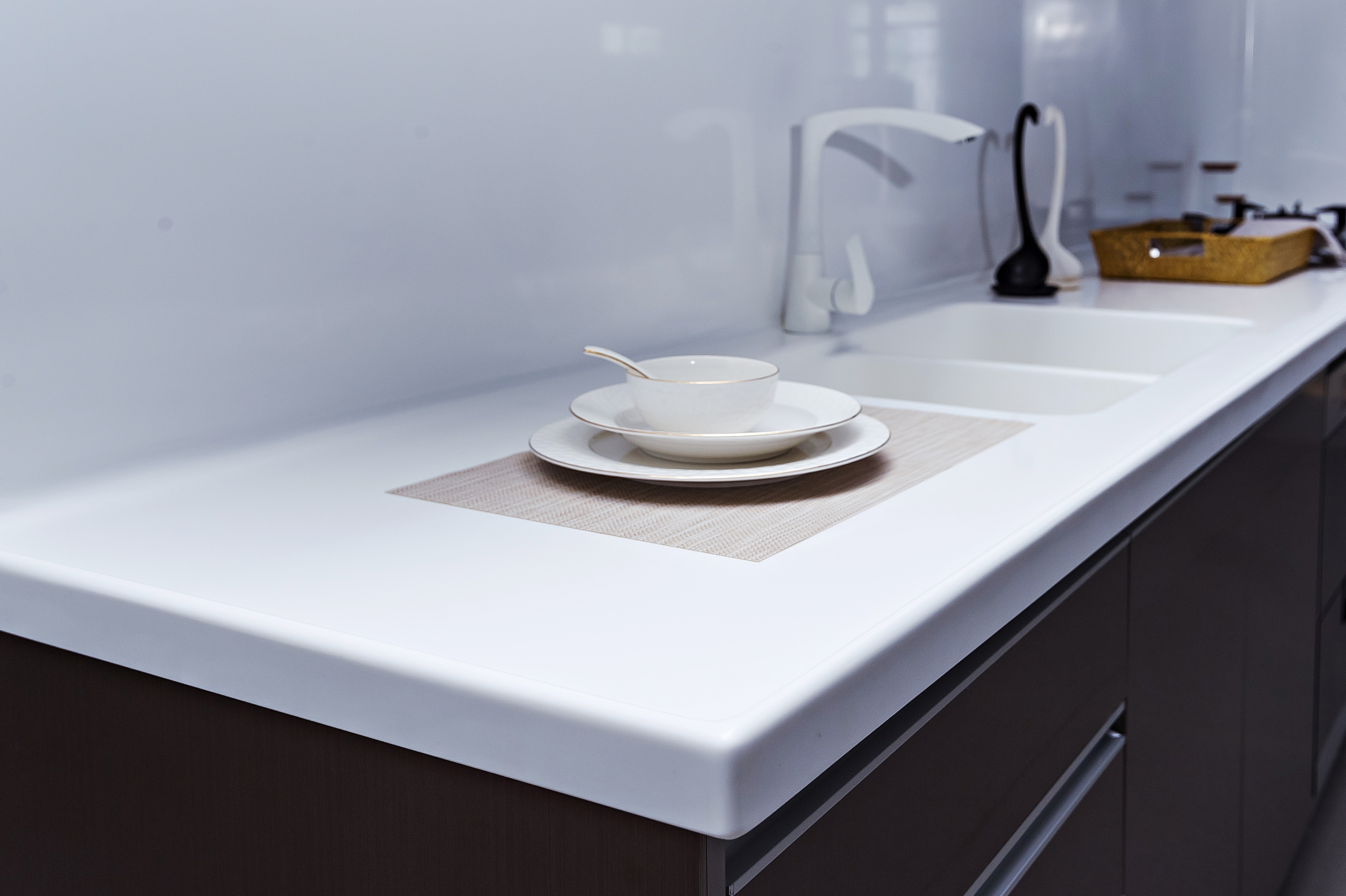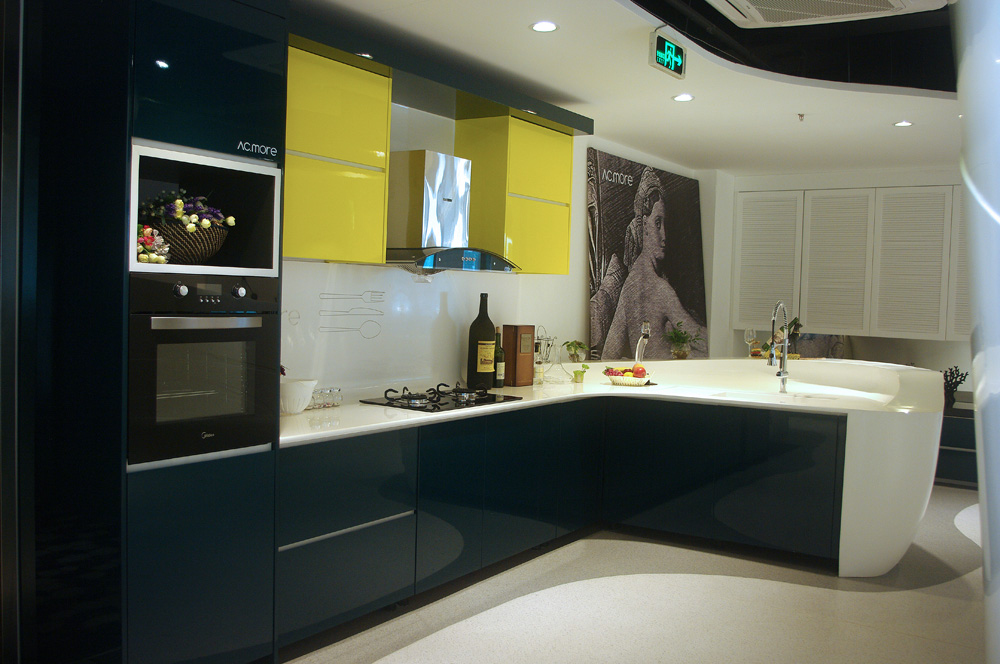Choosing your next kitchen countertop feels huge, right? It's a surface you use daily, a major visual element. With popular dominating choices like solid surface countertops or quartz countertops, picking the perfect one often causes analysis paralysis for homeowners planning a refresh or build.
This guide cuts straight to the chase. We compare solid surface and quartz head-to-head, giving you the clear facts needed to decide confidently for your kitchen space.
Let's talk about the daily grind in your kitchen. How well will your countertop handle dropped utensils, hot cookware, and the inevitable coffee or wine spill? These three areas – durability, heat, and stain resistance – are where solid surface and quartz show their distinct personalities. Understanding them helps you choose wisely.
Durability: Hardness vs. Repairability
Quartz brings serious toughness. It's composed mostly of natural quartz minerals (super hard stuff) bonded with resins. This means it strongly resists scratches from typical use, like sliding plates or chopping near it (though always use a cutting board). It stands up well to impacts.
However, that hardness makes it brittle. A sharp, heavy impact, especially on an edge or corner, can cause chips or cracks. Repairing quartz isn't a simple DIY job; it often requires a professional and might still be noticeable.
Solid surface countertops, made from acrylic or polyester blends, are softer. You'll find they can scratch more easily than quartz, maybe from dragging heavy ceramics or abrasive cleaners. Here’s the key trade-off: light scratches and even minor dings on solid surface are often repairable. You (or a pro) can buff or sand them out, restoring a like-new finish.
Heat Resistance: Know the Limits
Hot pans are a constant in the kitchen. Quartz generally handles heat better than solid surface, thanks to the natural stone content. But, it is not heat-proof. The resins binding the quartz can scorch or discolor from direct, high heat, or sudden temperature changes (thermal shock). Setting a screaming-hot pan directly on quartz is asking for trouble. Always use trivets or hot pads. Heat damage is often permanent.
Solid surface requires more vigilance with heat. Its acrylic/polyester composition means it has a lower melting point. Placing hot pans directly onto it will likely cause scorching, warping, or discoloration. Trivets are absolutely essential – no cheating here. Minor scorch marks might sometimes be repairable on solid surface, unlike quartz, but significant heat damage is difficult to fix.
Stain Resistance: Both Shine Here
This is a strong point for both materials. Because solid surface and quartz are non-porous, they don't absorb liquids easily. Spills like wine, coffee, or juice generally wipe right off without leaving stains, especially if cleaned up reasonably quickly. Neither material requires sealing to maintain this resistance.
Quartz's density gives it a slight edge, perhaps resisting tough staining agents for longer periods. Solid surface is still exceptionally good; even if a stubborn dye somehow leaves a mark (like turmeric left overnight), it can often be addressed with specific cleaners or even light sanding, tying back to its repairability.
Performance matters, but let's be honest: how your countertop looks is huge. It often sets the visual tone for the entire kitchen. Both quartz and solid surface offer a massive array of choices, but they achieve fundamentally different aesthetics. One excels at mimicking nature; the other delivers unique fabrication possibilities.
Quartz: The Stone Mimic
If you love the look of natural stone like granite or marble but want more predictability, quartz is your go-to. Manufacturers combine ground natural quartz with pigments and polymer resins. They often add recycled glass, mirror pieces, or metallic flecks to create intricate patterns with depth and luminosity.
You'll find quartz in a vast spectrum of colors and designs. Options range from fine, subtle speckles to bold, dramatic veining that sweeps across the slab. While the patterns are engineered and more uniform than true quarried stone, many people prefer this consistency. A point to remember: you will typically have visible seams where slabs join, although skilled installers make them tight and discreet.

Solid Surface: Seamless & Shapeable
Solid surface usually offers a softer, more uniform, or subtly patterned appearance. Think consistent color throughout or small, integrated particles rather than large swirls or veins. Its aesthetic superpower lies in its ability to be seamless. Sections can be chemically welded and sanded so the joint becomes invisible to the eye and touch.
This seamless quality unlocks design potential. Your countertop can flow directly into a matching solid surface backsplash or an integrated sink molded from the same sheet. This creates an incredibly smooth, modern, and easy-to-clean profile. Solid surface can also be heated and bent (thermoformed) into curves and organic shapes—something impossible with rigid quartz slabs. While some older styles could look a bit plasticky, today's options include sophisticated matte finishes, subtle textures, and a huge palette, including bright, solid colors not typically found in quartz.

Quick Style Comparison:
● Natural Stone Look: Quartz excels here, offering depth and realistic veining.
● Seamless Appearance: Solid Surface is the undisputed winner for invisible seams.
● Integrated Sinks: Easily achieved with Solid Surface for a sleek, unified design.
● Color/Pattern Variety: Both have wide ranges. Quartz leads in stone-looks; Solid Surface offers unique solid colors and seamless patterns.
● Shape Flexibility: Solid Surface can be thermoformed into curves and custom shapes.
Compared to natural stones like granite or marble that demand regular sealing, both quartz and solid surface are refreshingly low-maintenance. Daily upkeep is generally straightforward for both. Still, knowing the specific dos and don'ts prevents accidental damage and keeps them pristine.
Simple Daily Cleaning
For everyday wipe-downs, you can’t beat the basics. Simple soap and water or your favorite mild, non-abrasive household cleaner works perfectly on either surface. Use a soft cloth (microfiber cloths are excellent) or a sponge. Because these materials are non-porous, spills and messes tend to sit right on top, making cleanup fast. Easy peasy.
Quartz Care Specifics
With quartz, the main goal is to avoid harsh treatments that can mar the finish. Stay away from abrasive scouring pads or cleaners containing bleach, oven cleaner, or anything highly acidic or alkaline. These can dull the surface or potentially damage the resins binding the quartz together. While it resists stains like a champ, it's still smart to wipe up spills promptly. And remember the big benefit: quartz never needs sealing.
Solid Surface Care Specifics
Solid surface care echoes quartz in many ways. Use soft cloths and gentle cleaners. Avoid coarse scrubbing pads that might leave fine scratches (though these are often repairable). Manufacturers sometimes recommend specific products, like mildly abrasive liquid cleansers (use sparingly) or ammonia-based solutions for tougher grime. Like quartz, solid surface never needs sealing, saving you time and effort.
Repairability: The Maintenance X-Factor
This is where solid surface presents a distinct long-term maintenance advantage. Its repairability is a big deal. As covered earlier, minor scratches, scuffs, cigarette burns, or even some small chips can often be professionally (or sometimes carefully DIY) sanded and buffed out, restoring the original look. You can tackle wear-and-tear. Repairing damage like chips, deep scratches, or heat scorching on quartz is much more challenging, typically needs a pro, and the fix might remain visible.
Quick Care Summary:
● Daily Cleaning: Simple for both (mild soap/water, soft cloth).
● Sealing Required: NO for either material.
● Quartz Watch-outs: Avoid harsh chemicals & abrasive pads; damage is hard to fix.
● Solid Surface Edge: Similar easy care, plus superior repairability for common wear.
Let's talk dollars and cents, a critical part of any kitchen renovation. When comparing quartz and solid surface, there's an overlap, but generally, quartz commands a higher price point. Keep in mind that the final installed cost is what matters most, as fabrication and installation make up a good chunk of the total expense for both materials.
What Drives the Price Tag?
Several variables influence the final quote you'll get for either countertop:
● Brand & Collection: Premium brands and specific high-design collections cost more.
● Color & Pattern Complexity: Simple solid colors are usually the most affordable. Intricate veining or unique patterns increase the price.
● Slab Thickness & Edge Profiles: Thicker materials or decorative edge treatments add to fabrication costs.
● Cutouts & Features: Openings for sinks, cooktops, and features like integrated solid surface sinks affect the labor involved.
● Geographic Location & Fabricator: Labor rates and market conditions vary.
Quartz Cost Range
Quartz typically sits in the mid-range to upper-tier of countertop pricing. As of early 2025 in the US market, expect installed prices to generally run from about $60 to $150+ per square foot. Basic speckled patterns from lesser-known brands might hit the lower end, while complex marble-look designs from top-tier manufacturers can easily exceed the high end.
Solid Surface Cost Range
Solid surface often provides a more accessible starting price, overlapping significantly with quartz's lower to mid-range. You'll likely find installed costs ranging from approximately $50 to $120+ per square foot (again, US market estimates early 2025). Standard solid colors are usually the most budget-friendly. Prices rise for patterns mimicking stone, integrated sinks, or complex layouts requiring more fabrication work.
Installation Isn't Optional
These estimated ranges include professional installation, which is the standard route. Quartz slabs are extremely heavy and require precise cutting and handling. Solid surface needs specialized techniques and adhesives for those seamless joints. Trying to DIY either is generally not recommended. Get detailed quotes from several reputable local fabricators for an accurate comparison based on your specific project.
Thinking About Value
Consider the long view, too. Quartz often carries a higher perceived value, potentially boosting home resale appeal. Solid surface counters, thanks to their repairability for common wear like scratches, might maintain their original look longer, possibly delaying replacement costs. It’s a balance between upfront investment, desired aesthetic, and how you value long-term appearance versus potential repair needs.

Choosing between quartz and solid surface ultimately hinges on your priorities. Do you lean towards the exceptional hardness of quartz, or does the seamless beauty and repairability of solid surface appeal more? Both materials perform well, but they cater to different needs and aesthetic goals.
If the idea of invisible seams, integrated sinks, unique design possibilities, and the practical long-term advantage of a surface that can often be repaired attracts you, solid surface presents a compelling case. Our own GELANDY solid surface is designed to deliver these very benefits, providing durable, hygienic, and beautiful surfaces in a wide array of styles.
We hope this comparison helps clarify your options. Knowing these key differences empowers you to select a countertop material that you’ll appreciate and enjoy using every day in your kitchen.
Ready to explore high-quality solid surface options further?
Discover the colors, patterns, and possibilities offered by GELANDY solid surface by visiting our website: https://www.bienstone.com/products